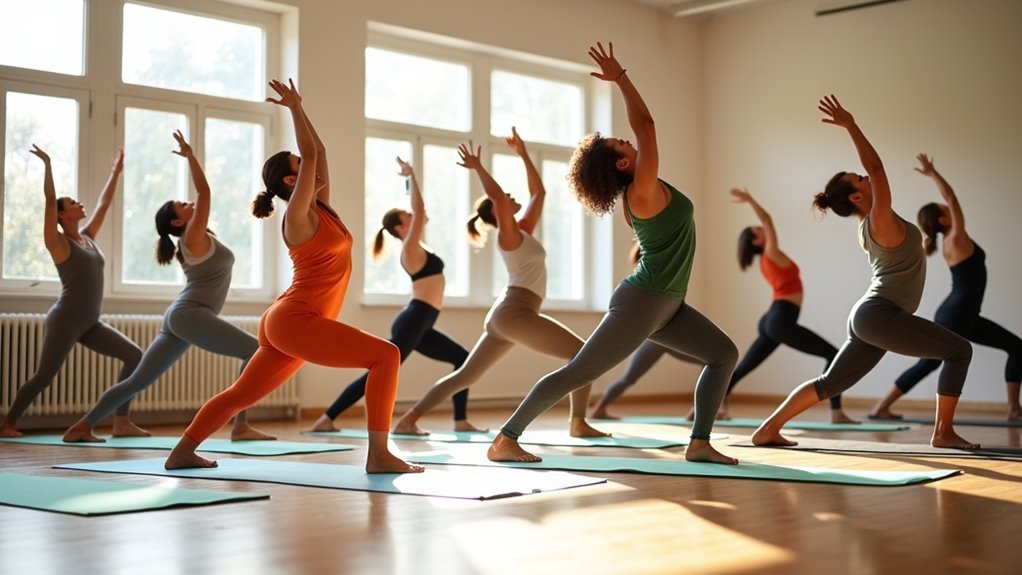On May 17, you’re invited to unwind and explore a 20-minute full-body beginner yoga flow. This session is crafted to enhance your flexibility and strength while introducing essential poses and mindful breathing. You’ll start with warm-up exercises to ease into the practice. As you progress, you’ll discover how to establish rhythm and alignment. Interested in finding out how to prepare your space and what props you’ll need?
What to Expect From the Session
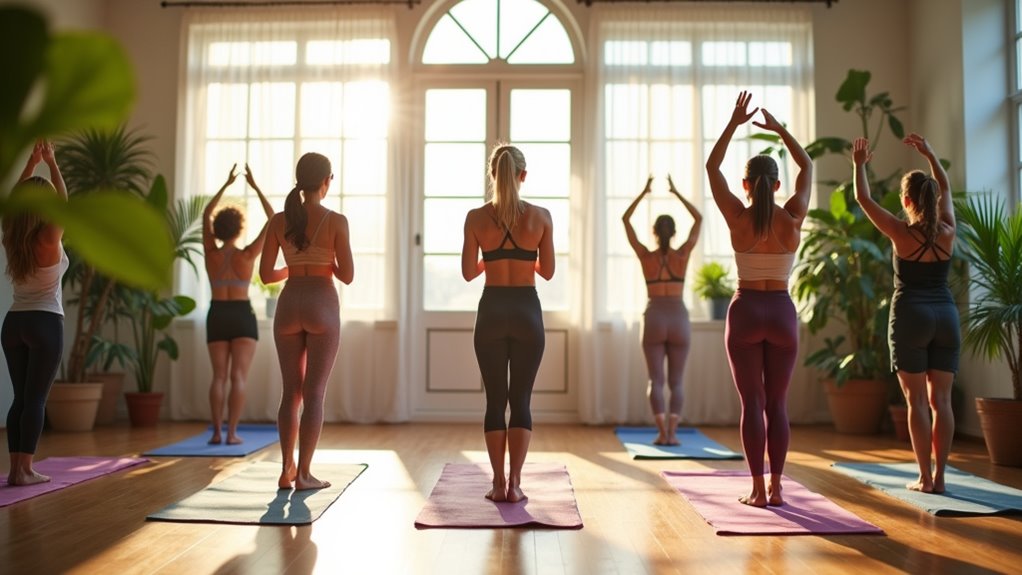
As you step onto your mat for the full-body beginner yoga flow, you can expect a gentle introduction to various postures aimed at enhancing your flexibility and strength.
You’ll start with simple movements that warm up your body and prepare your mind for the practice ahead. Expect to engage in foundational poses like Downward Dog and Warrior I, which help build confidence and stability.
The session will guide you through breathing techniques, helping you find your rhythm while focusing on alignment. You’ll also experience moments of stillness, encouraging mindfulness and relaxation.
Preparing Your Space for Yoga
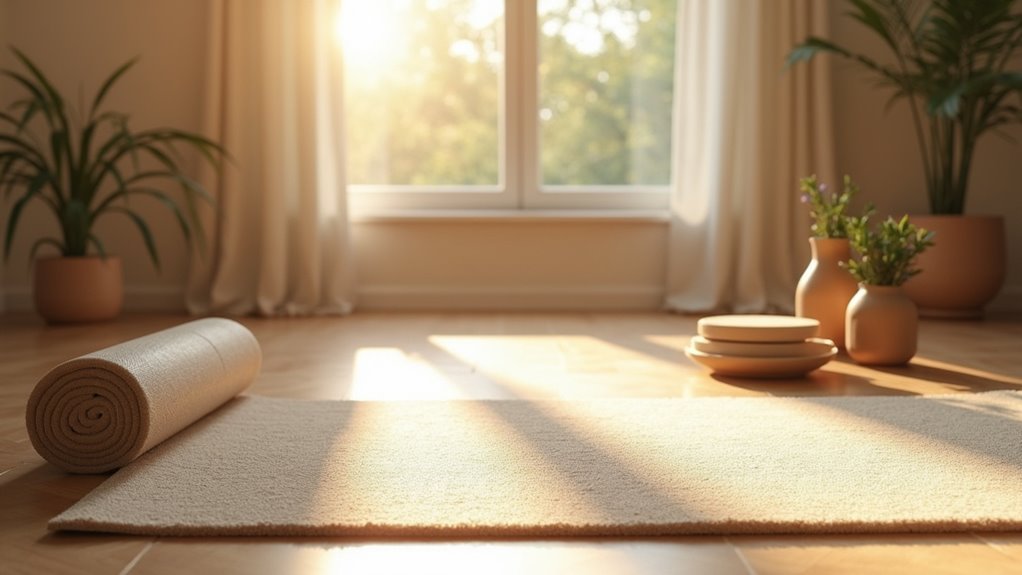
Creating a peaceful environment is essential for your yoga practice. Start by finding a quiet space where you won’t be disturbed.
Clear the area of clutter, allowing for a calm and focused mindset. Dim the lights or use soft lighting to create a soothing atmosphere. You might want to play gentle music or nature sounds to enhance your experience.
Temperature matters too; make sure it’s comfortable for you. Consider adding a few personal touches, like candles or plants, to make the space feel inviting.
Lastly, roll out your yoga mat in the center, ensuring you have enough room to move freely. Preparing your space thoughtfully sets the stage for a fulfilling practice.
Enjoy your flow!
Essential Props and Equipment
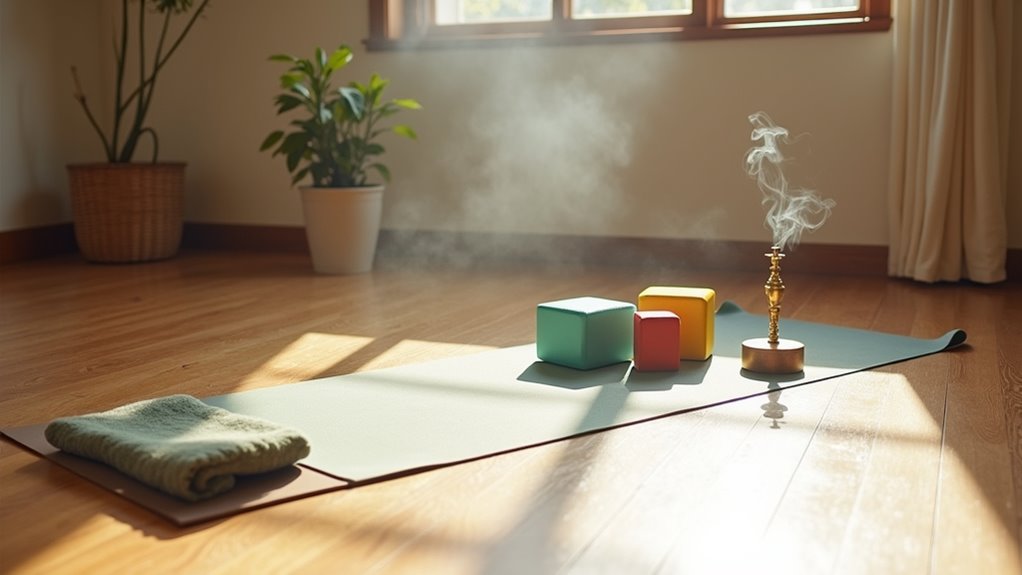
Having the right props and equipment can enhance your yoga practice and make it more enjoyable, especially as a beginner.
Start with a good-quality yoga mat; it’ll provide cushioning and grip. A couple of yoga blocks can help you reach poses more easily and maintain proper alignment. A strap is useful for deepening stretches and improving flexibility without straining.
Consider a bolster or cushion for added support during seated or restorative poses. If you like, grab a blanket for extra comfort or warmth during savasana.
Finally, don’t forget to wear comfortable, breathable clothing that allows movement. With these essentials, you’ll feel more confident and supported as you flow through your practice.
Warm-Up Exercises
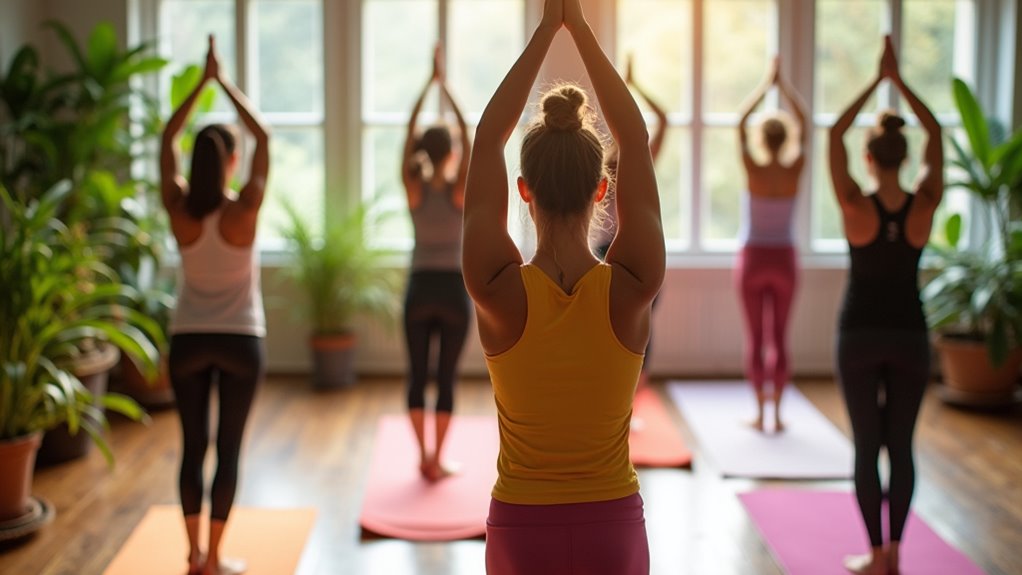
With your props ready, it’s time to warm up your body and prepare for the yoga flow ahead.
Start by finding a comfortable seated position. Inhale deeply, lifting your arms overhead, and exhale as you bring them back down. Repeat this three times to engage your breath.
Next, gently roll your shoulders back and forth, loosening any tension. Move into a cat-cow stretch on all fours, alternating between arching your back and rounding it. This helps to increase spinal flexibility.
Finally, transition into a gentle side stretch by reaching one arm overhead and leaning to the opposite side. Hold for a few breaths on each side.
These warm-up exercises will help you connect with your body and ease into your practice.
Beginner-Friendly Poses
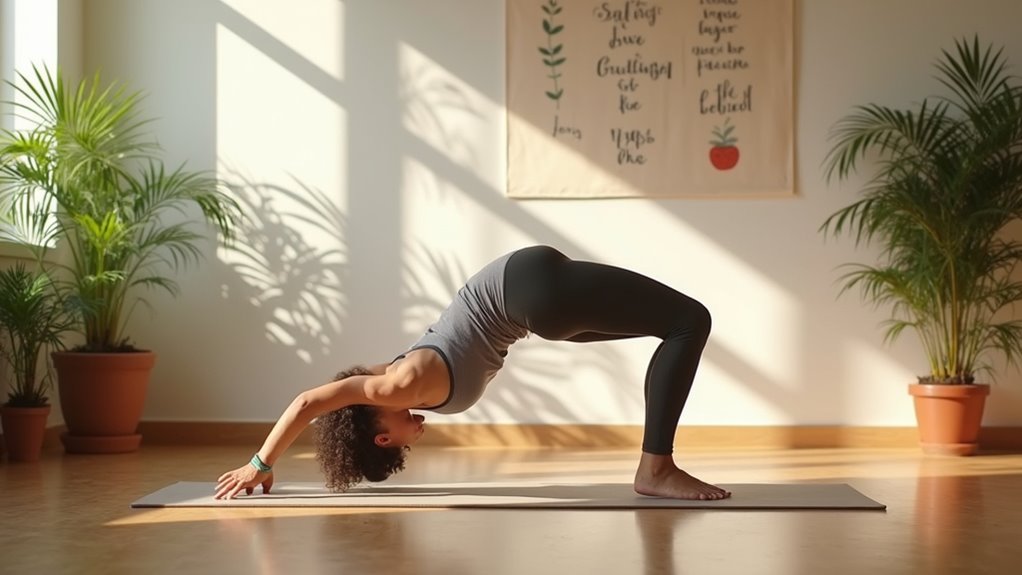
Three beginner-friendly poses will help you build strength and flexibility while enhancing your overall practice.
Start with Downward-Facing Dog. This pose stretches your hamstrings and calves while strengthening your arms and shoulders. Press your hands into the mat and lift your hips high, creating an inverted V shape.
Next, try Warrior I. Step one foot back, keeping your front knee bent and your back leg straight. Reach your arms overhead, grounding yourself and building stability.
Finally, move into Child’s Pose. Kneel on the mat, sit back on your heels, and stretch your arms forward. This restorative pose allows you to relax while gently stretching your back and hips.
Incorporate these poses into your routine to cultivate a solid foundation for your practice.
Breathing Techniques for Relaxation
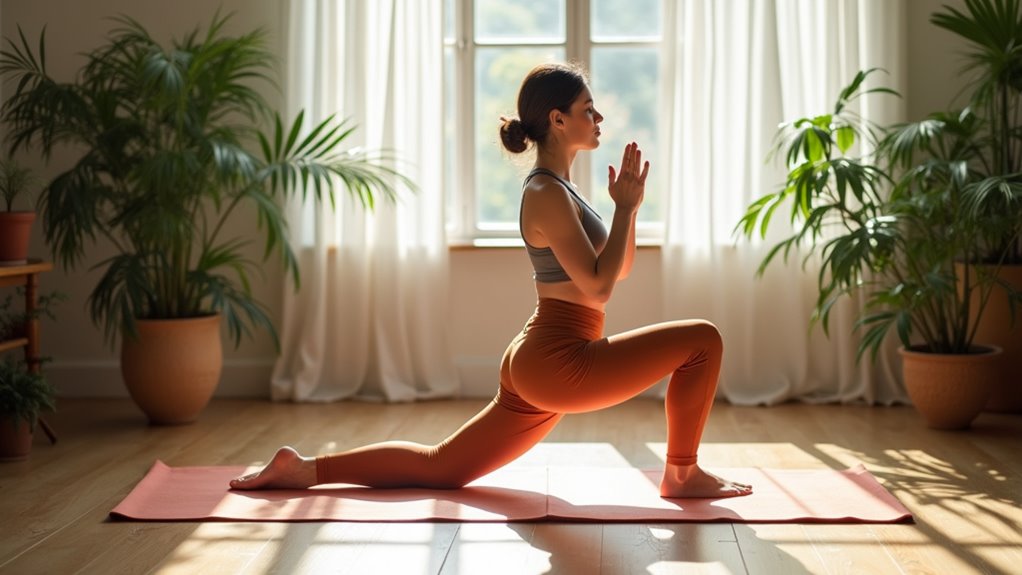
As you flow through your yoga practice, incorporating breathing techniques can deepen your relaxation and enhance your overall experience.
Start with diaphragmatic breathing: inhale deeply through your nose, allowing your belly to rise, and exhale slowly through your mouth, feeling your belly fall. This technique calms your nervous system and promotes a sense of peace.
Next, try the 4-7-8 technique—inhale for a count of four, hold for seven, and exhale for eight. This helps release tension and encourages mindfulness.
You can also practice box breathing: inhale, hold, exhale, and hold again, each for a count of four. These techniques ground you, allowing you to connect with your breath and body during your practice.
Enjoy the tranquility they bring!
Tips for Staying Mindful During Practice
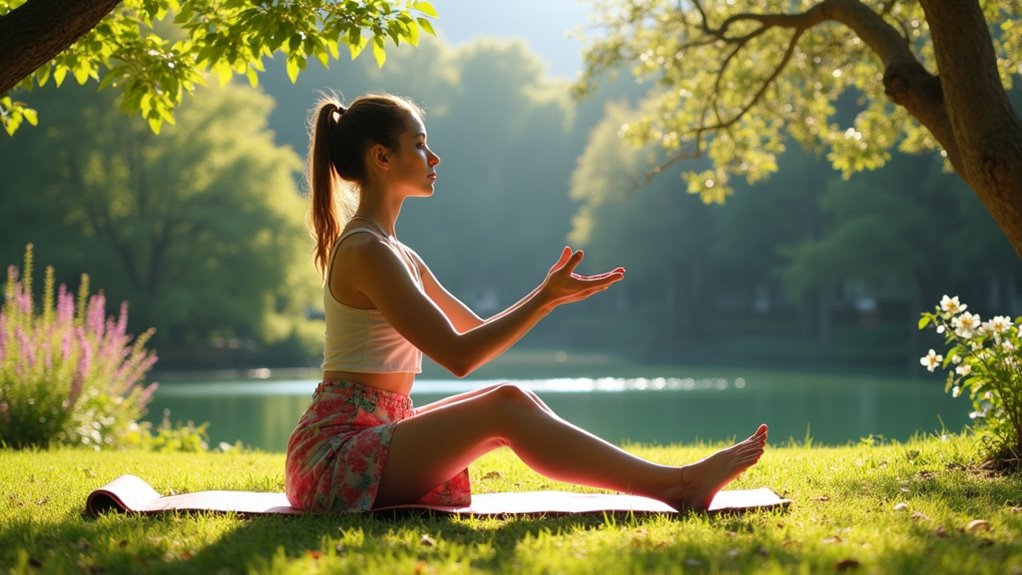
To stay mindful during your yoga practice, focus on the sensations in your body rather than letting your thoughts drift. Pay attention to how each pose feels, noticing areas of tension and relaxation.
If your mind wanders, gently guide it back to your breath. Use your inhales to create space and your exhales to release any tightness.
Cultivating a sense of gratitude for your body can deepen your awareness, so appreciate what it can do in each moment. Consider setting an intention for your practice, whether it’s self-compassion or simply being present.
Finally, embrace the journey; every practice is unique. Remember, mindfulness is about observing without judgment, fostering a deeper connection to your body and mind.
Next Steps on Your Yoga Journey
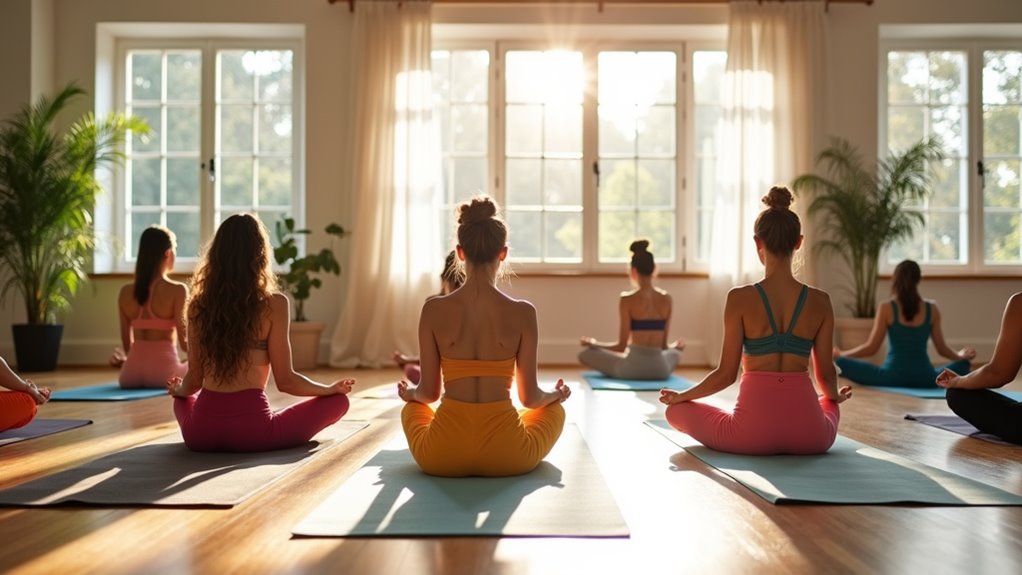
Once you’ve developed a consistent yoga practice, it’s time to explore the next steps on your journey.
Consider deepening your experience by trying different styles, like Vinyasa or Hatha, to find what resonates most with you. You might also want to attend workshops or classes with experienced instructors who can guide you further.
Incorporating meditation can enhance your practice, helping you connect more deeply with your breath and body.
Setting personal goals, whether it’s mastering a specific pose or improving flexibility, can keep you motivated.
Finally, consider joining a yoga community, either online or in-person, to share experiences and support each other.
Embrace this journey, and remember, every step brings you closer to your practice’s true essence.
Conclusion
As you wrap up your 20-minute full-body yoga flow, take a moment to appreciate your efforts. You’ve built a foundation for flexibility and strength while embracing mindful breathing. Remember, yoga is a journey, not a destination. Keep practicing these poses, and don’t hesitate to explore more sessions to deepen your experience. Every practice brings you closer to inner peace and confidence. Enjoy the calming effects and look forward to your next session!
